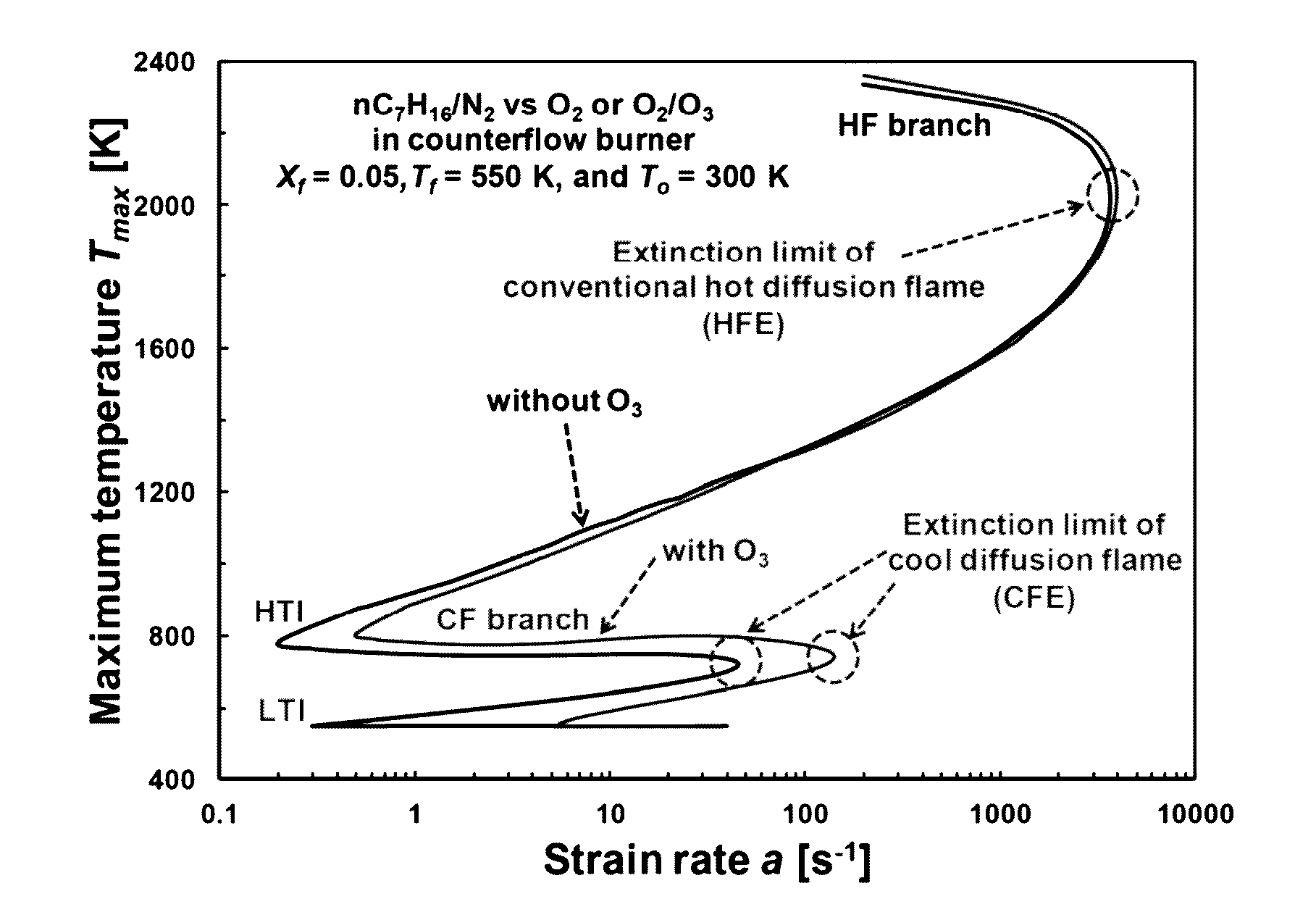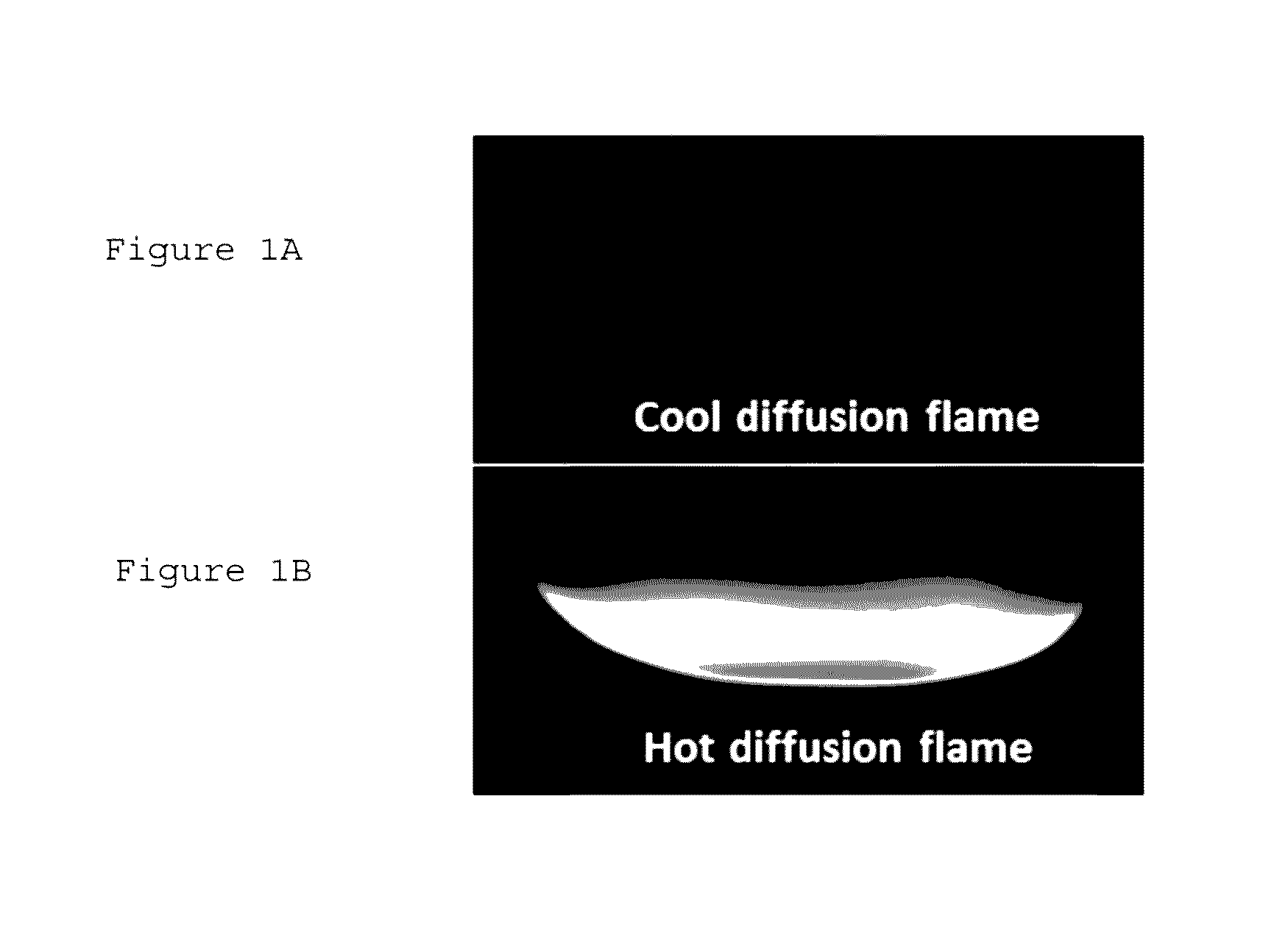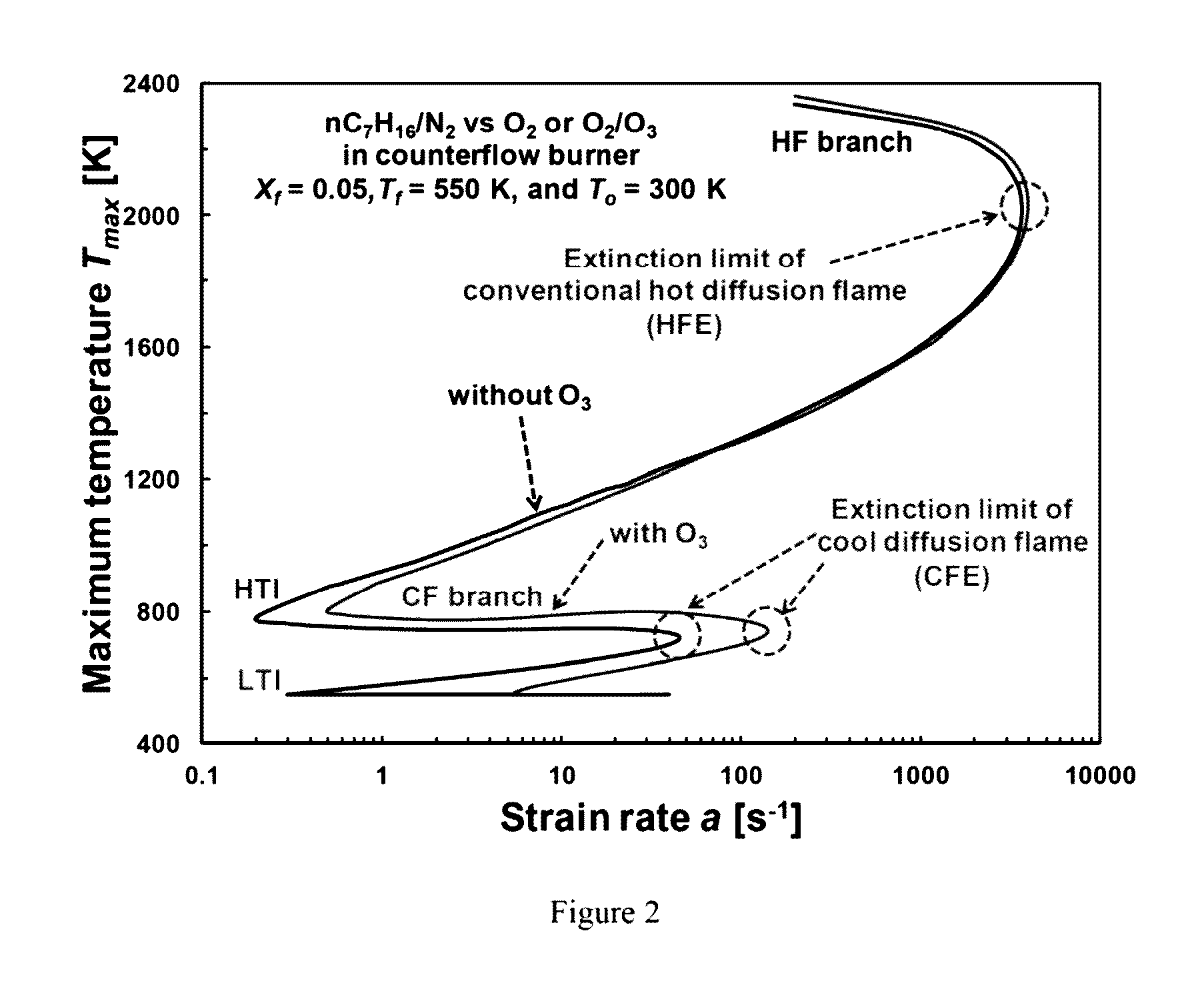Process for generating cool frame and flameless fuel oxidation using non-equilibrium plasma activation
a plasma activation and process technology, applied in the direction of fuels, indirect carbon-dioxide mitigation, lighting and heating apparatus, etc., can solve the problems of engine knocking, flame stability, soot and nox emissions, low temperature combustion and fuel oxidation below 1000 k, which are difficult to achieve and/or unstable for engines and fuel processing
- Summary
- Abstract
- Description
- Claims
- Application Information
AI Technical Summary
Benefits of technology
Problems solved by technology
Method used
Image
Examples
Embodiment Construction
[0022]An exemplary embodiment can be an exemplary method, which can include, for example, generating a cool flame(s) using a plasma-assisted combustion, and maintaining the cool flame(s). The cool flame(s) can have an exemplary maximum temperature below about 1050 K, which can be about 700 K. The cool flame(s) can be further generated using a heated counterflow flame arrangement and an ozone generating arrangement. The cool flame burner arrangement can include a liquid fuel vaporization arrangement. The ozone generating arrangement can include a micro plasma dielectric barrier discharge arrangement. The plasma-assisted combustion can be generated using (i) liquid normal alkanes, ethers, and / or transportation fuels, (ii) heated nitrogen and / or air, and (iii) ozone.
[0023]In some exemplary embodiments of the present disclosure, the ozone can be between about 0.1% and about 5%. The heated nitrogen or air can have a temperature between about 400 K and about 850 K. The ozone can be decomp...
PUM
| Property | Measurement | Unit |
|---|---|---|
| temperature | aaaaa | aaaaa |
| temperature | aaaaa | aaaaa |
| temperature | aaaaa | aaaaa |
Abstract
Description
Claims
Application Information
 Login to View More
Login to View More - R&D Engineer
- R&D Manager
- IP Professional
- Industry Leading Data Capabilities
- Powerful AI technology
- Patent DNA Extraction
Browse by: Latest US Patents, China's latest patents, Technical Efficacy Thesaurus, Application Domain, Technology Topic, Popular Technical Reports.
© 2024 PatSnap. All rights reserved.Legal|Privacy policy|Modern Slavery Act Transparency Statement|Sitemap|About US| Contact US: help@patsnap.com










